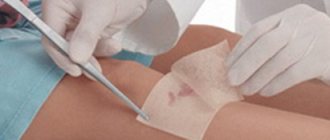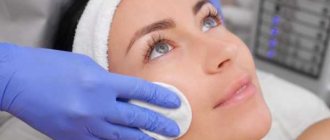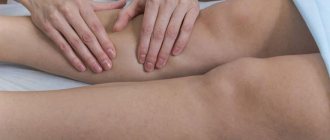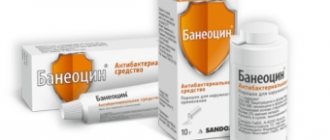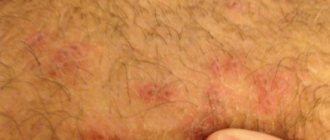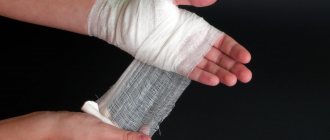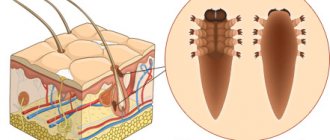Any damage to the integrity of the skin poses a threat to the body, expressed not only in the danger of losing a large amount of blood, but also in infection with various ailments, because any pathogenic microorganisms can penetrate through it.
Quite a large number of people, in the old fashioned way, when receiving a cut or abrasion, as well as another wound, use brilliant green or iodine to treat, but such products can only disinfect the damage and do not have a healing effect. In this article you will learn which wound healing agents are best to use for open wounds, and which of them have a quick healing effect.
Indications for the use of wound healing agents
The environment has an aggressive effect on the human body in general and on the skin in particular. Even minor damage can become a “gateway” for pathogenic microorganisms such as staphylococci and streptococci. Harmful microflora, getting into the subcutaneous tissues, begin to multiply quickly in conditions of high humidity. This process can lead to inflammation and even blood poisoning.
The action of wound healing agents is aimed at speedy healing. To ensure the effectiveness of treatment, pharmacologists have developed various release forms. Depending on the nature of the lesion, the doctor prescribes drugs in the form of ointment, gel or paste.
Treatment of wounds depends on the degree of damage and the correct approach. The indication for choosing funds is their classification.
According to the principle of action, wound healing drugs are divided into:
- anti-inflammatory . Their use is advisable for closed bruises, muscle strains, and joint diseases;
- disinfectants . They perform the function of disinfection for minor damage to the epidermis, such as scratches, abrasions, bruises, and small cuts. Their goal is to create a barrier to infection;
- antiseptics and antibiotics . They are used to treat purulent inflammations, as well as to prevent septic complications;
- regenerative . Used for the treatment of open wounds of varying complexity, trophic ulcers, frostbite. Drugs in this group accelerate recovery by increasing blood flow in the affected area and creating favorable conditions for tissue repair;
- necrolytic . Necessary for removing necrotic tissue that forms at the site of burns, frostbite, blood clotting;
- decongestants . Reduce swelling and intensity of the inflammatory process in the affected area by improving blood supply to the injured area;
- drying . They are used to heal purulent, weeping wounds, cracks on the arms and legs.
Ointments for healing open wounds
A fairly large group for wound healing includes drugs with a wide range of active ingredients. Each ointment has its own special composition that provides the most effective therapy. Wound healing agents produce a local effect on the damage. Their goal is to maximize the natural process of tissue repair and stimulate collagen production.
Wound healing products have the following characteristics:
- safety. Many products have a natural composition. Thus, the toxic effect of the drug on the body is minimal;
- high efficiency, confirmed by scientific research and real patient reviews;
- absence of allergic reactions or their rather rare occurrence.
The first thing you need to do when you receive a stab, cut wound or burn is to protect the injury from infection. Traumatologists advise not to rush to stop the bleeding in the first minutes after receiving an open skin injury. The fact is that blood is a natural antiseptic. Flowing from damaged vessels, it washes away various particles of dirt that can cause inflammation. After the bleeding has stopped, the wound is washed with antiseptics. To do this, use a solution of furatsilin, chlorhexidine, and hydrogen peroxide. You can use iodine and brilliant green, but make sure that the antiseptic does not get into the wound. And only after 2 hours a bandage with wound healing agents is applied.
These drugs have two release forms. Jelly is used if ichor is constantly secreted from the wound, then a healing cream is used when the wound dries out. The ointment is used for application to a dry wound. By creating a protective film, it promotes rapid healing, preventing exposure to the external environment and the entry of pathogenic microflora. After treatment, the bandage is applied after 2-3 hours to allow the ointment to show its therapeutic effect.
- Actovegin
The anti-inflammatory and antimicrobial drug Actovegin is made from calf blood. Its action is to accumulate oxygen and other useful substances in cells. This improves metabolism at the cellular level. This process stimulates energy metabolism and allows the cells of affected tissues to recover much faster.
Actovegin ointment is used to treat dry wounds in the healing stage. It copes well with scarring in a short time, while forming a thin crust, after which there are almost no scars left.
The product is used only for external use. Small cuts and burns should be lubricated twice a day with a thin layer. To treat deep wounds and ulcers, the ointment should be applied in a thick layer. Then the affected area is covered with a gauze bandage to prevent dust and dirt from entering the inflammation site. In serious cases, Actovegin is applied up to six times a day, each time changing the bandage and treating the wound with an antiseptic.
- Solcoseryl
Solcoseryl is a universal drug for the treatment of skin lesions of various origins. Namely:
- abrasions, puncture and incised wounds, surgical incisions;
- 1st and 2nd degree burns resulting from spilled boiling water, overheating in the sun, interaction with chemical reagents;
- bedsores;
- eczema, trophic ulcers, weeping wounds that have been in critical condition for a long time;
- bruises and closed skin lesions due to contusions;
- acne and scars.
Solcoseryl is produced in the form of ointment and gel. The gel form of the drug is used for therapy in the first days, since at this time any wounds are moist. The ointment is used at the final stage. Additionally, the product has anti-inflammatory and analgesic properties.
Apply a thin layer of Solcoseryl directly to the damaged skin.
- Eplan
Eplan is a universal wound healing agent for patients of all ages. The drug was developed by Russian military doctors for use in space orbit. Currently, Eplan is available for purchase in the pharmacy chain. Its main actions: healing wounds, pain relief, fighting inflammation, protecting and moisturizing the skin, eliminating pathogenic microorganisms.
The drug does not contain hormones or antibiotics, which makes it possible to use the medicine for children from the first days of life and the elderly.
Eplan is indicated for the treatment of the following lesions:
- purulent wounds;
- psoriasis;
- trophic ulcer;
- burns of various origins;
- eczema;
- furunculosis;
- frostbite.
Eplan is available in various forms:
- ointment for the treatment of skin lesions over large areas;
- liniment from insect bites;
- dropper bottles;
- sterile gauze wipes.
Eplan ointment for wound healing is used for:
- reducing pain;
- preventing itching;
- improving cell regeneration;
- preventing the appearance of ulcers;
- wound healing;
- eliminating bedsores;
- protection against tissue necrosis.
The duration of the ointment is 8 hours. The course of treatment can last up to two months.
- Argosulfan
The antibacterial agent Argosulfan is used to treat wounds, cuts, burns, bedsores, skin diseases, and trophic ulcers. Thanks to the silver ions included in the drug, Argosulfan affects gram-positive and gram-negative bacteria, destroying them at the DNA level. Silver also does an excellent job of healing even with severe injuries, such as trophic ulcers and bedsores.
The ointment is applied to the wound in a thick layer 3 times a day. The maximum daily dose is 25 g. The course of treatment is 2 months.
- Betadine
Betadine is a povidone-iodine-based antiseptic wound solution. Like simple iodine, it is brown in color, but does not contain alcohol, which means it does not sting when it gets into an open wound or mucous membranes. It has a wide spectrum of action: antiviral, antimicrobial, disinfectant, bactericidal.
Iodine
Iodine
An accessible and frequently used disinfectant is iodine, which also actively helps remove inflammation. It is important to know that iodine is not a harmless medicine and should be handled very carefully. Improper use may cause skin burns. To treat the wound you will need:
- 5% iodine;
- cotton wool, ear stick or cotton pad.
The procedure must be carried out with clean hands so as not to provoke infection. Disinfection of minor cuts is carried out as follows:
- remove impurities from the skin;
- Apply a small amount of solution using a cotton swab and apply to the wound.
Wound
When treating a bleeding cut, it is forbidden to apply iodine directly to the wound; as a result, a burn may occur, and the therapy will be delayed for a long period. Applying the product is allowed only along the edges of the wound. To avoid the inflammatory process, you need to sprinkle streptocide on the wound. This drug can be purchased without problems at any pharmacy.
Iodine in the form of a disinfectant is not used to treat very deep wounds, trophic ulcers and people who have iodine intolerance.
After a correctly performed procedure for treating the damaged area of the skin, medications are used that accelerate the regeneration processes to quickly get rid of the wound. The most commonly used drugs are:
- Argosulfan;
- Levomekol;
- Betadine;
- Eplan;
- Vishnevsky ointment;
- Zinc ointment.
Ointments for healing purulent wounds
The use of ointments for healing purulent wounds can be classified as the second stage of treatment. At the first stage, when the skin has minor damage, anti-inflammatory and prophylactic agents are applied. In the case when a serious inflammatory process begins in an open wound - redness, suppuration, accompanied by throbbing pain, increased body temperature, antiseptic ointments based on antibiotics are used.
- Levomekol
A time-tested remedy is Levomekol ointment. The effect of the drug is most effective for the treatment of purulent wounds. It is indispensable in the treatment of burns of varying severity and origin.
The antibiotic included in the ointment affects many viruses and infections - streptococci and staphylococci, salmonella and E. coli.
The main active ingredient is chloramphenicol. It suppresses the process of protein formation in bacterial cells. In this case, the cells become exhausted and die.
Methyluracil copes well with sluggish healing of skin lesions from burns and bedsores. The restorative effect occurs due to the immunostimulating effect.
- Baneocin
This is a wound healing agent based on the antibiotics bacitracin and neomycin. The first destroys the cell walls of pathogenic microorganisms, preventing their reproduction. The second suppresses the production of protein inside the bacterium, depriving it of nutrition and performing a bactericidal effect. Bacitracin acts on gram-positive microorganisms, and neomycin on gram-negative ones, which ultimately increases the capabilities of the drug.
Baneocin is applied to the lesion two to four times a day. The daily dose should not exceed 1 g.
- Miramistin
Miramistin is a modern drug of a new generation. The main purpose is antiseptic treatment of wounds. It has a detrimental effect on bacteria, viruses and even fungal microorganisms. The special formula is aimed at enhancing the regeneration process and increasing local protective reactions in the affected area. The mechanism of action is to identify the cells of pathogenic microbes, penetrate them and destroy them.
Miramistin has various release forms. Ointment and spray often purchased at the pharmacy. The drug gained popularity due to its intense antimicrobial effect. This product has almost no side effects and is approved for use even by children.
The main actions of Miramistin:
- counteraction to skin fungal pathologies;
- treatment of wounds, scratches, abrasions for the purpose of disinfection;
- reduction of swelling in inflamed tissues;
- treatment of purulent wounds;
- localization of inflammation.
Miramistin will cope with infections even in cases where other antibacterial agents were powerless.
For the treatment of open wounds, Miramistin is applied in small quantities 3 times a day directly to the lesion. The ointment can be replaced with a gauze bandage soaked in medicine. When carrying out all these manipulations, it is first necessary to treat the wound with a solution.
Vishnevsky
Vishnevsky ointment
This ointment is a very widely used, simple and affordable product that has a wide range of effects. Vishnevsky ointment consists of the following components:
- tar;
- Castor oil;
- xeroform.
With the help of the medicine, purulent formations are drawn out, the infection is eliminated, as well as the wound quickly dries and heals. It is mainly used in the presence of the following diseases:
- wounds that are severely inflamed;
- burns with internal infection;
- trophic ulcers.
The only contraindication to the use of the product is individual intolerance to the components included in its composition.
Before using any medication, you should consult your doctor about the correct dosage and number of uses. Improper use of ointments can harm your health and cause various complications.
Ointment for healing scratches and cracks
- Dexpanthenol (D-panthenol, Bepanten, Panthenol)
In everyday life, there is a high probability of minor damage to the skin. Small cuts, abrasions, and cracks can appear in both adults and children. Therefore, every apartment should have an ointment in the first aid kit to treat such injuries.
The best creams for healing wounds, cracks and abrasions have long been known to everyone and are available in every apartment. These are Rescuer, D-Panthenol, Astroderm, Ichthyol ointment, Levomekol.
The most convenient and effective drug is Dexpanthenol ointment. Its purpose is to regenerate the epidermis, relieve inflammation, and have an analgesic effect. It improves metabolism at the cellular level, which helps speed up the healing of damaged tissues. As an additional effect, it protects the skin from the aggressive effects of free radicals.
- Methyluracil
The ointment is made on the basis of methyluracil. The composition contains auxiliary agents Vaseline and lanolin. Their fatty base helps the active substance penetrate deep into the tissue.
The main properties of the drug are suppression of inflammation, acceleration of regeneration, local anesthesia, stimulation of immune processes.
Methyluracil is used as a wound healing agent for abrasions, burns, cracks, cuts, as well as for the treatment of eczema, lichen, and trophic ulcers.
The composition of the ointment is universal and is suitable in combination with antibiotics and antiseptics. It can be applied several times a day. You can use up to 10 g of product for one manipulation.
Compound
The Zazhivaika cream contains the following substances: glycerin, water, propylene glycol, cetearyl alcohol, glyceryl stearate, larch resin, cyclomethicone, castor oil, wax, triisononanoin, vinyl acetate/vinylpyrrolidone copolymer, stearyl dimethicone, capric triglycerides/caprylic, ceteareth-20 , PEG-castor oil40 hydrogenation, lanolin, sage extract, bergenia extract, allantoin, mint oil, sea buckthorn oil, clary sage oil, tetradibutylpentaerythrityl hydroxyhydrocinnamate, propylparaben, methylparaben, methylisothiazolinone.
The best wound healing creams for post-operative wounds
Surgical damage to the skin is necessary to solve more complex problems regarding the patient’s health. Healing will proceed quickly and without complications if the postoperative sutures are treated correctly and in a timely manner. The best wound healing creams for postoperative wounds are Levomekol, Mederma, Betadine, Solcoseryl, Bepanten, Vishnevsky Ointment.
- Mederma
Mederma hypoallergenic gel has an antibacterial function. After its application, blood circulation improves and skin cell renewal occurs at an accelerated rate. The product copes well with scarring, while surgical sutures heal quickly and do not leave scars.
- Ichthyol ointment
The ointment has antiseptic and anti-inflammatory properties. It gained popularity due to its high therapeutic effect, wide spectrum of action, and budget price. After application, blood microcirculation improves, the wound heals quickly and the skin is restored.
After contact with the skin, the ointment is quickly absorbed in this particular area into the peripheral circulation, without affecting the main blood flow.
- Contractubex
This drug is increasingly gaining popularity for its anti-inflammatory, antithrombotic, and keratolytic properties. It is prescribed to prevent the formation of pathological scars.
The best remedies for healing burns
- Radevit
Along with Panthenol and Bepanten, Male Radevit does an excellent job of healing wounds after burns. The composition includes vitamins of groups A, E, D. It is thanks to them that skin regeneration occurs and metabolism in tissues is stimulated.
The product is universal and suitable for healing burns of various origins. It can also be used for dermatoses. Radevit not only treats, but also cares for damaged skin. Growing skin often becomes dry and small cracks appear on it, which can cause secondary infection. Radevit moisturizes the skin surface, preventing negative consequences.
Contraindications
Each ointment has its own list of contraindications and warnings for use. Most drugs are prohibited for use in children of a certain age, during pregnancy or while breastfeeding.
Some remedies should be used with great caution in the presence of serious chronic diseases that impair the functioning of the entire body.
Most external medications for burn injuries are highly effective. They help speed up the healing of the wound surface, prevent the development of secondary infection and eliminate pain.
The best drugs for healing wounds on mucous membranes
- Retinol
Wounds on the oral mucosa are quite difficult to treat. Constant humidity interferes with speedy healing. But there are a number of drugs that can overcome this problem.
Retinol affects the mucous membranes and restores the integrity of the oral cavity. To use, apply 3-4 times a day for 10-15 minutes.
- Levosin
An ointment based on the antibiotic Levomycetin and sulfadimethoxine has antibacterial properties. Works well on wet wounds or injuries in dentistry or gynecology.
To treat the nasal mucosa, you can apply the ointment 2-3 times a day, and pre-moisten it with AquaMaris or AquaLor.
Restrictions
Considering the above, iodine ointment cannot be used without taking into account restrictions. Before using Betadine, you should familiarize yourself with the list of contraindications and possible drug-drug interactions, because the effectiveness and safety of therapy directly depends on this.
Contraindications
Conditions for which the use of the drug is not only not recommended, but also dangerous, are included in the section of the instructions on contraindications. They may be:
- Individual intolerance to iodine compounds.
- Pathology of the thyroid gland (diffuse and nodular goiter, autoimmune thyroiditis).
- Use of radioactive iodine (in the diagnosis and treatment of thyroid cancer).
- Dühring's dermatitis.
- Kidney failure.
Treatment with Betadine is not carried out after 2 months of pregnancy and during breastfeeding, since iodine passes through the placenta and enters milk (there is a risk of hyperthyroidism in the fetus and newborn).
To ensure that treatment with iodide ointment is as safe as possible, the patient must be examined for contraindications.
